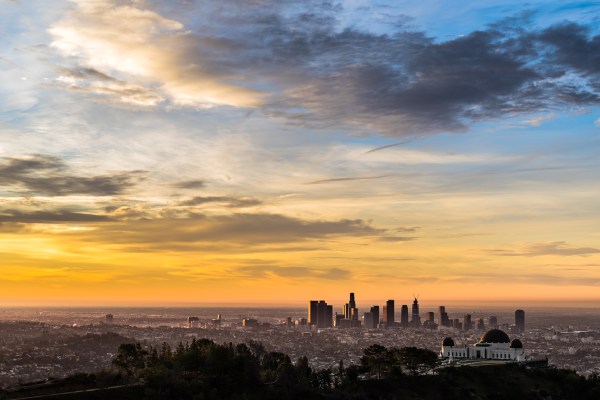Los Angeles is famous for two things: entertainment and traffic. Back in the 1950s, any association with “stars” and “cars” would be the envy of any modern city. But today, that’s sometimes overshadowed by images of aggressive paparazzi and gridlocked freeways.
Thankfully, over the last five years, the emergence of big content-centric startups like Maker Studios, Hulu and even Snapchat has shown that LA can embrace its Hollywood DNA to fuel its burgeoning tech scene. But when it comes to transportation, there might be more to LA than just bloated commute times.
Intrinsically, anyone from LA knows that we spend far too much time thinking and talking about traffic (if you haven’t seen SNL’s rendition of “The Californians,” that should give you an idea). In a normal city, weather is a standard conversation starter. But in a city with 329 days of sunshine, conversations here naturally begin instead with a serious discussion about traffic and commute schedules.
All that discussion of gridlock may make it seem like we don’t have our act together when it comes to transportation. But if that’s the case, why did Elon Musk choose to build his Mars-chasing SpaceX in LA? Or why did Bay Area-based Shervin Pishevar choose downtown LA for the HQ of Hyperloop One? And why did Chinese giant LeEco choose sunny Southern California as the home for their ambitious electric self-driving car company, Faraday Future?
Simple: LA is a powerhouse in transportation technology.
This isn’t a new development, either. LA has been a leading transportation technology center for decades.
Since the Lockheed Corporation made its home in Burbank in 1928 (as it happens, the same year Warner Bros. moved its studios to Burbank), LA has been consistently churning out new, transformative modes of transportation. The first space shuttle was built in LA county, as were all four of NASA’s Mars Rovers. For a time, Boeing was Southern California’s largest employer. And NASA’s Jet Propulsion Laboratory (JPL) in Pasadena actually predates NASA itself. When JPL was established next to Caltech in 1936, it was already developing next-gen rocket launchers and early lunar landers. Only after NASA was formed by Eisenhower in 1958 did JPL transfer to NASA’s control. Today, JPL is most well-known for building and managing NASA’s fleet of Mars Rovers, and it funnels talent to Elon Musk’s SpaceX.
It’s no surprise that prominent engineers, investors and entrepreneurs are proactively building their transportation ventures in LA.
Southern California’s engineering talent continues to be the leading factor for LA’s continued success in delivering bleeding-edge transportation tech. Even with early LA mainstays like Boeing, Lockheed and Northrop Grumman moving the bulk of their manufacturing divisions outside of California to states with lower labor costs, all three continue to maintain sizable engineering departments in Southern California. Not only that, but the LA area’s nine engineering schools, including those at Caltech, USC, UCLA and Harvey Mudd, continue to graduate top-quality talent for companies like SpaceX, Boeing and, now, Hyperloop One.
In fact, LA graduates more engineers than any other U.S. metro area. That statistic is referenced freely by LA’s startup community in an effort to encourage more LA-based software startups. While that statistic is often taken to mean that LA graduates a lot of programmers (which it does), in reality, a large portion of those engineers are also your PhD-level aerospace engineers, graduate-level electrical engineers and Caltech mechanical engineering grads. Not exactly your stereotypical programmer, right? But it’s exactly those engineers you need to build next-generation modes of transportation, and LA has no shortage of them.
Even beyond Hyperloops and aerospace, the strength of LA’s university system continues to lead the way in bringing new edge-case transportation solutions to market. Case in point, TallyGo, an LA-based real-time navigation startup, was spun out of technology originally developed in-house at USC’s IMSC institute. The company has since raised millions in funding from local investors and is now taking on mapping giants like Waze, Google and Apple Maps.
And, believe it or not, LA even leads the nation in traffic mitigation; in 2012, LA was the first major city to sync all its traffic lights. That technology has increased the speed of traffic by 16 percent, reduced travel times in the city by 12 percent and, like a scene out of Fast & Furious, can be used to automatically reprioritize key travel lanes in times of emergency.
With such a strong foundation, it’s no surprise that prominent engineers, investors and entrepreneurs are proactively building their transportation ventures in LA. In the not too distant future, self-driving cars from Google, Uber, Tesla or LA’s Faraday Future may eliminate the city’s traffic woes. Hyperloop One could eliminate travel time between LA, SF, Vegas, San Diego and Phoenix.
And one day, you might even be able to hitch a first-class ride to Mars — courtesy of LA-native, Elon Musk.
